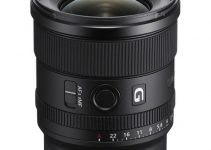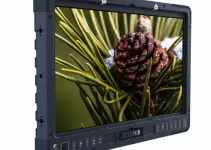Many filmmakers and videographers alike still wonder what are the major differences between the Sony’s A7 compact mirrorless cameras on one hand and the dedicated video camcorders such as the Sony FS7 on the other. Apparently, the line between those seems to blur more and more with every new version.
Considering that all these units are powered by similar image sensors, often use the same lenses and share almost identical recording options it’s reasonable to ask where still and video cameras stand today. Doug Guerra from B&H explores the video quality and functionality differences between the Sony A7 mirrorless lineup and the Sony FS7 professional camcorder in the following head-to-head comparison review.
Having those three cameras side-by-side is probably the best way to find out how they perform in regards to overall image quality, ergonomics, and functionality. It’s worth noting that all of the three have utilised the same lenses along with identical settings during the test. Plus, all of them have been outputted to an external recorder to be able to retain the maximum image quality.
In terms of latitude the Sony FS7 seemed to deliver the smoothest highlight rolloff when shooting is S-Log2 out of the three. The S-Log3 profile, on the other hand, definitely helps the A7S II to retain more highlight details in comparison to S-Log2, even though the FS7 is still the clear winner as we can easily see from the screen grab below.
Furthermore, shadow details and noise levels are also important aspects when considering dynamic range, and in that regard, both mirrorless cameras pull well ahead of the FS7. So, keep that in mind, especially if you plan to shoot low light scenes under highly-dimmed conditions.
Both the A7S II and the A7R II feature S-Log2 and look similar straight out of the camera. However, in both S-Log2 and S-Log3, the FS7 has some clear advantages in saturation and contrast. The 10-bit processing of the FS7 helps significantly when it comes to overall colour rendition which is another proof that even when you have an external recorder for those mirrorless cameras the lack of 10-bit recording can limit the flexibility and options you’ll have later in post.
In terms of resolution, the differences between the three units are negligible. However, for all pixel-peepers out there it’s safe to say that the footage straight out of the A7R II is a bit sharper compared to the one of the Sony A7S II. We shouldn’t be surprised, though, given the immense sensor size of the A7R II. However, that sharpness of the A7R II is matched by the FS7. All in all, intercutting between the three cameras should work like a treat.
Rolling shutter artefacts are another big consideration for videographers, especially for those of you who predominantly shoot intense action scenes and sports events. Even though the rolling shutter of the A7S II and A7R II was significantly improved over time, it’s still a consideration to be aware of. Naturally, as a dedicated professional camcorder, the FS7 is designed to deal with those issues better, so there are no surprises in that regard.
As for ISO capabilities, the A7S II is the clear winner followed by the A7RII and the FS7. Obviously, the latter falls a bit short even though its native ISO 2000. Just make sure that you don’t push the camcorder above ISO6400 if you want to capture usable images without too much noise.
Lastly, in regards to size and ergonomics, you have to decide which form factor better fits your needs. Obviously, both mirrorless cameras are compact and lightweight. The FS7, on the other hand, provides a plethora of dedicated features, plus it requires a minimum of rigging accessories to operate, whereas the mirrorless cameras will need a lot of bits and pieces before you put together a working kit.
Regarding connectivity options, the FS7 is only out of the three that provides professional audio XLR inputs as well as 10-bit SDI outputs. The latter also has more battery options in comparison to the smaller mirrorless cameras so it’s also another important consideration. The best part is that all three cameras can compliment each other thanks to shared lenses, colour rendition and 4K resolution, so again it all comes to your personal needs as a filmmaker and the type of projects you have to deal with on a daily basis.
[source: B&H]
B&H Order Links:
Sony Alpha a7S II Mirrorless Digital Camera (Body Only)
Sony Alpha a7R II Mirrorless Digital Camera (Body Only)
Sony PXW-FS7 XDCAM Super 35 Camera System
Amazon US Order Links:
Sony Alpha a7S II Mirrorless Digital Camera (Body Only)
Sony Alpha a7R II Mirrorless Digital Camera (Body Only)
Sony PXW-FS7 XDCAM Super 35 Camera System
Disclaimer: As an Amazon Associate partner and participant in B&H and Adorama Affiliate programmes, we earn a small comission from each purchase made through the affiliate links listed above at no additional cost to you.
Claim your copy of DAVINCI RESOLVE - SIMPLIFIED COURSE with 50% off! Get Instant Access!






Unfortunately I see blooming+banding in overexposed regions in all Sony consumer cameras so far. I don’t particularly like the Sony colors and all 4K cameras I’ve rented so far (Sony) had problems with overheating. For our personal needs those cameras can not even be used as B cams, probably more like C cams (we shot a lot outside and most of the time in over 30 °C).
On the other hand the FS7 is very nice, it doesn’t have the Canon or Panasonic colors which I prefer but for the money is one hack of a camera.
It’s so, so strange I’ve never even once experimented overheating on a Sony camcorder or the A7sII. I’m talking beach interviews here.
Tray covering a live event like a wedding with it, in the summer. 🙂
been shooting weddings with A7s/A7II/A7RII, no overheating whatsoever, we only use shoot 1080p though.
We never had the chance to test the FHD option. :)-
I own an FS7, and the color argument most make over the Sony color look is quite exaggerated. Using Cine EI with SLog3 SGamut3.cine is very close to the Alexa. I get incredible images better than any Canon I’ve used and the problems are chalked up to most not adapting their post workflow to the Camera. I use the Davinci FilmLooks LUT Kodak 2383 D65 REC709. That sits in the last node. In the node before that one I use the Log Wheels and boost saturation 100%. This is my normal fix for the quick grade to view what I shot. In the nodes previous you balance there. I get great looks out of the camera, and it truly is a wonderful piece of gear. I’m not downing Canon, just the fact most who haven’t used the FS7 jump on the Sony look bandwagon. Their new colorspace is quite good.